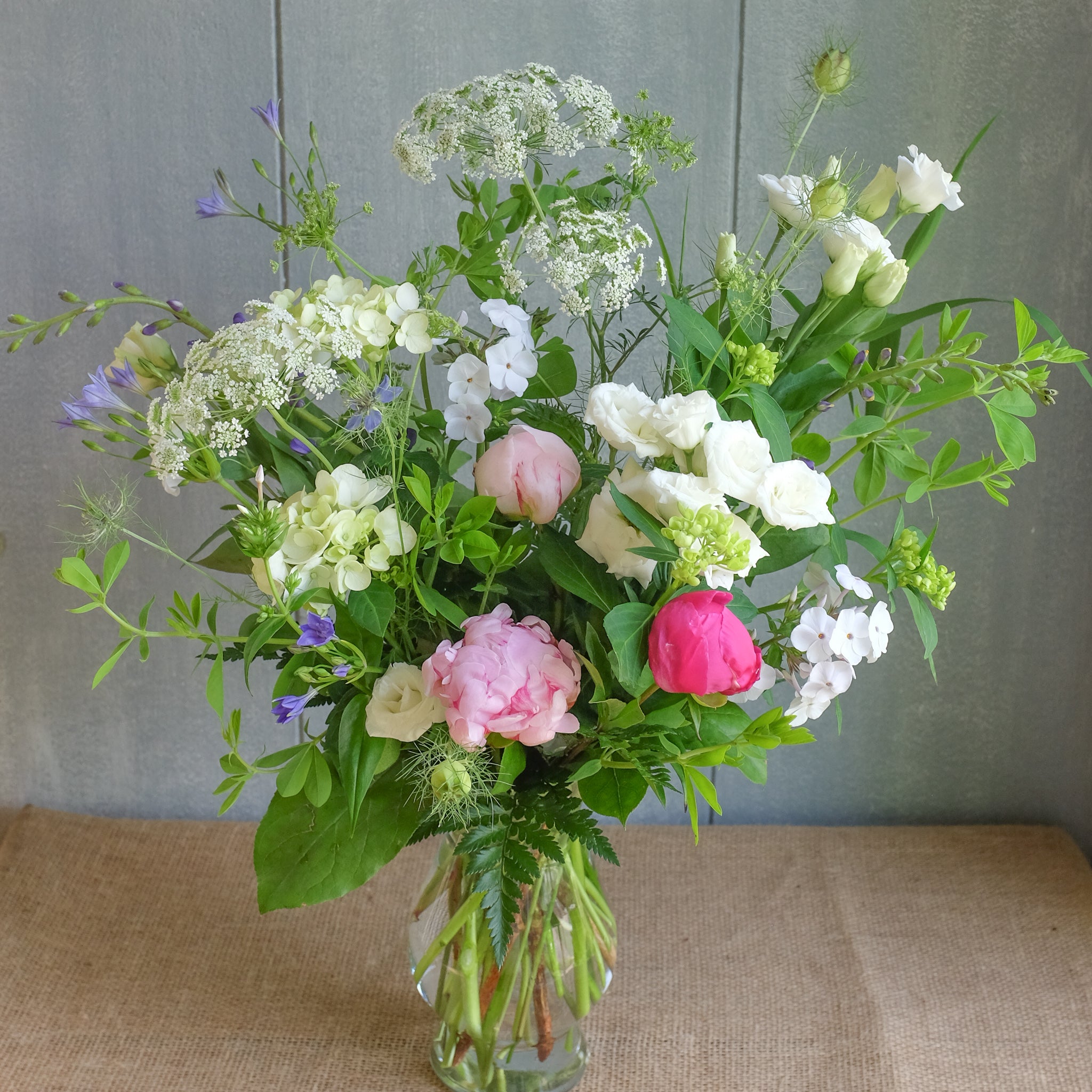I have a knack for finding gardens, especially when I travel. Maybe I'm just nosy, but no sooner do I set off down the street in a new place than I start catching flashes of color through fences, tantalizing foliage poking over brick walls. I turn a corner, and then--a gate, a garden, a small paradise. In the best scenarios, this happens in a park rather than a neighborhood, and I'm free to wander. Otherwise, my head turns as I walk on, and I wonder for the rest of the day about the person who tends to that corner of the world. It takes a certain blend of extravagance and patience to nurture a garden, after all, especially in a crowded city like London.
Richmond is one of the less crowded parts of London, and it is full of gardens. Famously, the Kew Botanical Gardens sit right in the middle of Richmond, but the row homes that line the streets boast pebbled front yards populated by camellia trees, flower boxes, and carefully trimmed hedges, even in the winter. Hellebores and snowdrops creep out from under taller plantings. Magnolia buds swell promisingly on bare branches.
"People love their gardens," Laura, my floral instructor, agreed when I mentioned what I'd seen on my daily walks in Richmond. "They're very proud of them. And there's so much more in the back that you can't see. The front is just a little hint."
I met Laura for the first time at the flower school, a storefront turned classroom a few doors down from the Zita Elze Flower Shop. The flower school was quiet, sparsely but tastefully furnished, with walls and walls of bookshelves extending farther back into the building. Laura offered me a cup of tea, and we settled at the large farmhouse table that filled the center of the room.
"Am I the only student?" I asked, eying the empty table.
"Yes. It's usually a small class," Laura said, "and January's quite slow."
She didn't seem bothered, though, and I better understood why as the course progressed. Laura teaches an emotion-first style of design that relies heavily on intuition. We spent the entire first day of the class sorting through images to create a mood board that perfectly captured the moody, romantic feeling I wanted to achieve with that week's floral arrangements. I enjoyed the exercise, and I enjoyed getting to know Laura while we worked, but it seemed a little impractical--until we went shopping.
Shopping excursions in the busier parts of London took up the next day-and-a-half of our five-day course. First, we visited a sprawling antiques market in search of the perfect brooches to ornament our bouquets. Treasures in hand, we then went to a luxury by-the-yard ribbon shop to select ribbons for the bouquets, boutonnieres, and pomander (the British alternative to flower girl petals).
At both stops, I was surprised to discover that the mood board Laura had helped me create became an indispensable tool for vetting potential purchases. I would have floundered amongst all the choices, say, at the ribbon shop if Laura hadn't gently returned my attention to the images I had curated. "This isn't quite right," she would say. "It's a little too orange. Look at how deep the burgundy is in the picture--almost purple." And we would move on.
By the time we visited the flower market on our third day of class, I was so steeped in the mood board aesthetic that the choices were less overwhelming. Deep purple hellebores, fluttering red butterfly ranunculus, fresh green viburnum, soft lavender clematis--we piled all of it into Laura's car and drove back to the shop, where we spent the remaining two days crafting the floral elements of the wedding I had dreamed up at the beginning of the week.
Laura demonstrated her techniques for wiring flowers, creating the pomander, and wrapping the bouquet stems in decorative ribbons, but for the most part, she gave me the freedom to design while she offered occasional suggestions or asked about my method. While it was a little nerve-wracking to have an experienced florist asking why about my work, her questions reminded me that there aren't merely functional reasons for the design choices I make--there are emotional ones.
Floral design is an art, and art, on a very basic level, inspires an emotional response. It's why people come to us for flowers in the first place: they want a loved one to feel celebrated or comforted; they want their homes to feel peaceful or vibrant or opulent. A huge part of floral design is deciding how something feels, whether that's a single stem or an entire composition. It isn't an exact science: feelings are messy and complicated and subjective. Sometimes, I feel one way about a composition and the person who ordered it feels a different way, and the only thing I can do is ask better questions and start again.
The why of the way something feels--you could get yourself tangled into a Gorgon's knot trying to explain it. There are reliable artistic principles to fall back on, words like contrast, movement, focus. At the end of the day, though, we're often forced to admit, "I like it. I'm drawn to it. It makes me happy." And that is that, simple as can be.
Laura reminded me that part of my job as a designer is to pay attention to these emotional responses and pursue them. It's amazing the places you can find inspiration when you listen to what moves you. Perhaps it's a painting, a dress, or a flash of bright blue sky between towering buildings. Perhaps it's the earliest spring daffodils like a promise of coming sunshine. Perhaps it's a glimpse of a garden where you never expected to find one.
Read about other Team Members' Trips or learn about how to Join the Team.
Photography credit: Carin Thakrar


